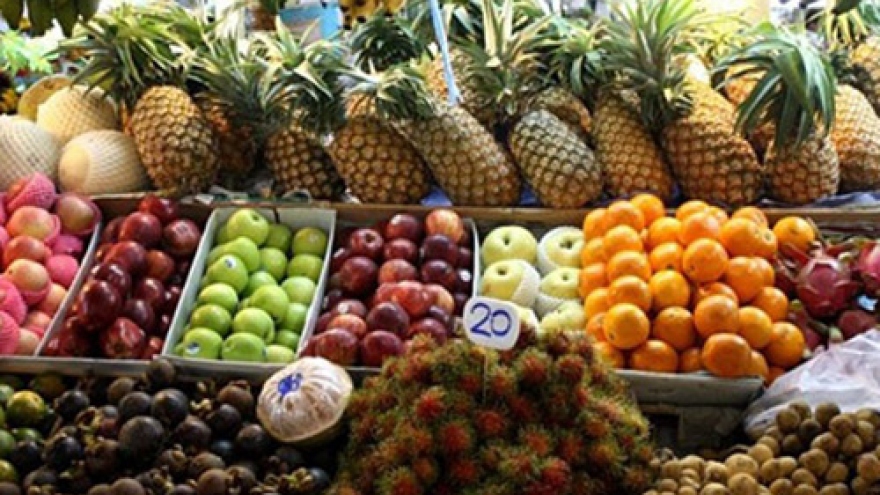After years of failed expectations, agriculture needs a rethink
Agriculture used to be considered the Vietnamese economy’s cushion against the shock of the global economic crisis and was expected to bring in high value when more and more trade agreements were signed.
 |
But after years of disappointed expectations, Vietnam’s agriculture is still developing in a way that relies heavily on the use of inputs and natural resources.
A complete rethink is needed if Vietnam wants to see substantive changes.
Challenges in attracting investment
Vietnam’s agriculture has made enormous progress, from helping Vietnam to become self-sufficient in food to making Vietnam one of the world’s leading exporters of a number of products.
But for Dang Kim Son, former Director of the Institute of Policy and Strategy for Agriculture and Rural Development (IPSARD), there is still much to worry about.
Again and again, he has expressed his view that agricultural growth in years past was mainly driven by the exploitation of natural resources and the overuse of chemical fertilisers.
These measures can produce a large amount of commodities, but they usually have very little added value.
He said, “Rapid yet unsustainable growth has been there for too long. It should have ended in 2000, or 2005 at the latest. But since then, agricultural development has still been dependent on the intensive use of natural resources.”
If Vietnam wants to transform agriculture into a major sector that generates substantial revenues, it is necessary to review its appeal to investment flows.
Son’s concern is not without grounds when investment in agriculture in the past few years has been rather small. Investment in agriculture is not only disproportionate to its promise but also too meagre in comparison with the quantity needed for its development, especially investment from non-State sources.
Investment in agriculture accounts for only about 5.4-5.6% of total social investment, while the sector still contributes 17.7% of gross domestic product, according to data from 2014.
It is also worth mentioning that investment by the domestic private sector is not only small, unsteady and inefficiently allocated, but that it has also shown signs of decline lately.
In the crop-farming sector, for example, private companies tend to concentrate on taking advantage of existing natural resources or commodity trading without paying attention to investing in supply chains, advanced technology and the processing industry to add more value to agricultural products.
The use of land is also inefficient, as many projects, such as forestry, animal husbandry and fruit tree projects, occupy large areas but produce less-than-expected output.
At a recent workshop on agribusiness organised by the Central Economic Commission, experts pointed out that one of the primary reasons for such weaknesses in the agricultural sector is its heavy dependence on smallholders who grow their crops on fragmented pieces of land.
It is also an obstacle when enterprises do not have enough clear land to produce on a large scale. According to official statistics, Vietnam has nine million hectares of arable land, one million hectares of water surface and eight million hectares of forest for economic purposes.
But such resources are scattered and belong to fifteen million farming households throughout the country, which makes land consolidation a highly challenging task.
When capital does not flow into agriculture and the public–private partnership model is not attractive enough to enterprises, it is hard to mobilise the resources needed to bring about sweeping changes in agriculture.
Plans for large-scale production, intensive farming, modern agricultural practices, brand-building, market access, value chains and expanding distribution networks and will exist on paper only if there are no resources to implement them.
A rethink is needed to promote commodity production
Experts say it is time for Vietnam to rethink its agricultural policy, shifting from an agriculture that aims to feed the nation to an agriculture that enriches its farmers by adding more knowledge and technology into the production process.
At present, several investors have emerged as the pioneers in applying advanced technology and developing the markets, thereby driving agriculture in many regions, such as Vinamilk, Lam Son Sugarcane Company, TH Truemilk and Viet Uc Company.
Vietnam has also seen an increase in its number of FDI projects in agriculture. As of June 2016, total foreign investment in agriculture reached nearly US$3.8 billion in 536 projects.
A bright spot is that in the first six months of 2016, another US$53.1 million in foreign funds was pledged to eight new and eight existing projects, up 86.5% over the same period of last year in terms of capital.
But all of that is not enough. If Vietnam wants to have an agriculture commensurate with its potential, the foremost solution that needs consideration is promoting commodity production through the formation of farms in designated areas where what is produced is highly competitive.
Furthermore, it is necessary to encourage contract-based agricultural activities to address the fact that smallholders are unable to access inputs and agricultural services, as well as to formalise the link between smallholders and the food-processing industry.
Another solution is accelerating the formation of linkages between agriculture and industry. This requires cooperation between relevant parties, including local authorities and trade associations in building the necessary infrastructure and establishing effective management of supply chains.
For now, there is also a lack of policies aimed at encouraging agribusinesses; such breakthroughs are needed to facilitate capital access and introduce other incentive policies.
If these above-mentioned measures are implemented concurrently, Vietnam will have more and more enterprises that could breathe a new life into its promising agricultural sector at a time when the country is deepening its international integration.



